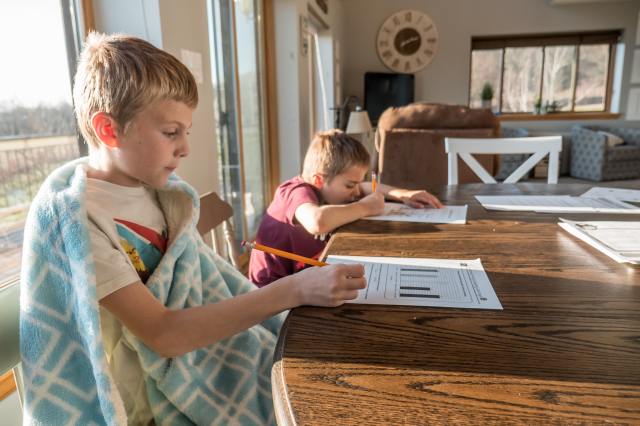
COVID-19 has revealed many failings, including the uneven distribution of responsibilities in the family unit, overall public health vulnerabilities in school populations, and the government itself. Education policymakers have shown a refusal (or outright inability) to modernize and evolve. However, one positive that could emerge from this wreckage is that parents have no choice but to take command of their children’s education as the de facto classroom has relocated to the kitchen table. Perhaps no area is more primed for innovation and disruption than K-12 education, particularly the one-in-five children who have learning differences.
Enacted in 1975, the Individuals with Disabilities Act establishes a substantive right to a “free appropriate public education” for eligible children with disabilities in the public school system, which includes special education and related services. The law requires that schools offer students individualized education programs that are reasonably calculated to result in progress. These individualized and specialized plans are supposed to be prepared by the child’s teachers, school officials, and parents in order to measure academic and functional goals for the child. But be forewarned, the individualized plans are far from a panacea. Instead, they are the first step in a Kafka-esque journey for families fighting for their educational betterment that they are entitled to by law.
Why is it then that so many inconsistently performing students are overlooked and unexamined? Schools and teachers deliberately by-design refuse to label certain learning conditions by what they actually are because they know that they will then be responsible for trying to remediate them. They recognize that they lack the resources, the expertise, and, frankly, the will to try to address these problems. As a result, these problems often go unaddressed for far longer than they should and cause far more emotional and academic damage than would be the case with early intervention. The burden of child advocate rests entirely on the parents to cajole, nag, and become a well-versed education policy expert in order to eke out a suitable education support plan that is legally-owed the student. Unsurprisingly, many IEP plans are anemic and devoid of real remediation.
Nine years ago, I distinctly remember meeting with my daughter’s first-grade public school teacher regarding her slight, but perceptible and growing, academic struggles relative to her peers. A no-nonsense veteran teacher leaned over and said in an unsettlingly hushed voice, “I think she may have a language issue.” I did not realize it then, but even that level of candor is verboten in the education world. It was not until several years later after various assessments and many thousands of dollars that we confirmed my daughter was exhibiting signs of a language-based learning disorder dyslexia.
Like similar learning disabilities, such as ADD and ADHD, dyslexia is known and unfamiliar at once, shrouded in misperceptions, and cloaked in mysterious-sounding euphemisms, like “processing issues.” Similar to other disabilities, it can wreak havoc on a young person’s life, affecting self-esteem both in and out of the classroom. For families of those with learning disorders, of course, there are also the economic costs of bringing one’s child to various specialists for examinations that do not come cheap. And those are the fortunate families who can afford to seek assistance. Many cannot.
This is where the parent advocates can make a huge difference, particularly in the current environment where almost all students will suffer from not receiving needed attention in the classroom setting. Of course, in the time of COVID, the burden may lie squarely with the parents to support their child’s learning differences and get up to speed. Online communities can be a great place to start. The National Association of Dyslexia, Understood.org and Child Mind Institute will arm you with a much-needed new vocabulary. But buyer beware: simply hiring “tutors” is not likely to close the widening knowledge gap. Evidence-based literacy programs, very particular teacher training, and certifications are necessary. Objective benchmarks must be employed to measure and gauge where your child is progressing.
COVID or not, our current education solutions for different learners are disgracefully two-tiered and malnourished. However, as society pivots, we have an opportunity to create break-the-mold solutions that leverage evidence-based programs and technology, along with the lessons of decades of failed public interventionist programs. It just so happens that this might be the perfect confluence of events to take these risks. Wouldn’t that be a teachable moment?











